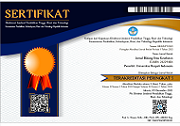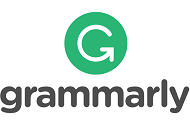REVIEW ARTIKEL: Interaksi Obat Tamoxifen Terhadap Konsumsi Tanaman dan Buah-Buahan Dalam Terapi Kanker Payudara
Abstract
Keywords
Full Text:
PDFReferences
Cooper GM. The Cell: A Molecular Approach. 2nd edition. 2nd ed. 2000.
Arnold M, Morgan E, Rumgay H, Mafra A, Singh D, Laversanne M, et al. Current and future burden of breast cancer: Global statistics for 2020 and 2040. The Breast. 2022 Dec;66:15–23.
Chaput G, Sumar N. Endocrine therapies for breast and prostate cancers. Canadian Family Physician. 2022 Apr 13;68(4):271–6.
Hu W, Xu D, Li N. Research Status of Systemic Adjuvant Therapy for Early Breast Cancer. Cancer Control. 2023 Apr 21;30.
Ami Ashariati Prayoga. Manajemen Kanker Payudara Komperhensif. 2019.
Howell A, Howell SJ. Tamoxifen evolution. Br J Cancer. 2023 Feb 2;128(3):421–5.
Davies C, Pan H, Godwin J, Gray R, Arriagada R, Raina V, et al. Long-term effects of continuing adjuvant tamoxifen to 10 years versus stopping at 5 years after diagnosis of oestrogen receptor-positive breast cancer: ATLAS, a randomised trial. The Lancet. 2013 Mar;381(9869):805–16.
Quirke VM. Tamoxifen from Failed Contraceptive Pill to Best-Selling Breast Cancer Medicine: A Case-Study in Pharmaceutical Innovation. Front Pharmacol. 2017 Sep 12;8.
Helland T, Alsomairy S, Lin C, Søiland H, Mellgren G, Hertz DL. Generating a Precision Endoxifen Prediction Algorithm to Advance Personalized Tamoxifen Treatment in Patients with Breast Cancer. J Pers Med. 2021 Mar 13;11(3):201.
Ferraldeschi R, Newman WG. The Impact of CYP2D6 Genotyping on Tamoxifen Treatment. Pharmaceuticals. 2010 Apr 15;3(4):1122–38.
Kiyotani K, Mushiroda T, Nakamura Y, Zembutsu H. Pharmacogenomics of Tamoxifen: Roles of Drug Metabolizing Enzymes and Transporters. Drug Metab Pharmacokinet. 2012;27(1):122–31.
Madlensky L, Natarajan L, Tchu S, Pu M, Mortimer J, Flatt SW, et al. Tamoxifen Metabolite Concentrations, CYP2D6 Genotype, and Breast Cancer Outcomes. Clin Pharmacol Ther. 2011 May 23;89(5):718–25.
Hansten PD. The Underrated Risks of Tamoxifen Drug Interactions. Eur J Drug Metab Pharmacokinet. 2018 Oct 10;43(5):495–508.
Flore G, Deledda A, Lombardo M, Armani A, Velluzzi F. Effects of Functional and Nutraceutical Foods in the Context of the Mediterranean Diet in Patients Diagnosed with Breast Cancer. Antioxidants. 2023 Oct 11;12(10):1845.
Shagufta, Ahmad I. Tamoxifen a pioneering drug: An update on the therapeutic potential of tamoxifen derivatives. Eur J Med Chem. 2018 Jan;143:515–31.
Cronin-Fenton DP, Damkier P, Lash TL. Metabolism and Transport of Tamoxifen in Relation to its Effectiveness: New Perspectives on an Ongoing Controversy. Future Oncology. 2014 Jan 31;10(1):107–22.
Cho YA, Lee W, Choi JS. Effects of curcumin on the pharmacokinetics of tamoxifen and its active metabolite, 4-hydroxytamoxifen, in rats: possible role of CYP3A4 and P-glycoprotein inhibition by curcumin. Pharmazie. 2012 Feb;67(2):124–30.
Hussaarts KGAM, Hurkmans DP, Oomen-de Hoop E, van Harten LJ, Berghuis S, van Alphen RJ, et al. Impact of Curcumin (with or without Piperine) on the Pharmacokinetics of Tamoxifen. Cancers (Basel). 2019 Mar 22;11(3):403.
KRISNAMURTI DGB, WANANDI SI, LOUISA M. CURCUMIN INCREASES THE SENSITIVITY OF BREAST CANCER CELLS TO TAMOXIFEN BY INHIBITING MRP2 MRNA EXPRESSION OF EFFLUX TRANSPORTER MRP2. International Journal of Applied Pharmaceutics. 2019 Apr 11;88–90.
Graça C, Cupido M, Tavares R, Consul R. Clinical Outcomes from Tamoxifen Drug-herb Interactions. International Journal of Clinical Pharmacology & Pharmacotherapy. 2018 Aug 8;3(2).
Wanwimolruk S, Phopin K, Prachayasittikul V. Cytochrome P450 enzyme mediated herbal drug interactions (Part 2). EXCLI J. 2014;13:869–96.
Yang L, Wang Y, Xu H, Huang G, Zhang Z, Ma Z, et al. Panax ginseng Inhibits Metabolism of Diester Alkaloids by Downregulating CYP3A4 Enzyme Activity via the Pregnane X Receptor. Evidence-Based Complementary and Alternative Medicine. 2019 Mar 21;2019:1–13.
Shu XO, Zheng Y, Cai H, Gu K, Chen Z, Zheng W, et al. Soy food intake and breast cancer survival. JAMA. 2009 Dec 9;302(22):2437–43.
Nechuta SJ, Caan BJ, Chen WY, Lu W, Chen Z, Kwan ML, et al. Soy food intake after diagnosis of breast cancer and survival: an in-depth analysis of combined evidence from cohort studies of US and Chinese women. Am J Clin Nutr. 2012 Jul;96(1):123–32.
Chi F, Wu R, Zeng YC, Xing R, Liu Y, Xu ZG. Post-diagnosis soy food intake and breast cancer survival: a meta-analysis of cohort studies. Asian Pac J Cancer Prev. 2013;14(4):2407–12.
Baglia ML, Zheng W, Li H, Yang G, Gao J, Gao YT, et al. The association of soy food consumption with the risk of subtype of breast cancers defined by hormone receptor and HER2 status. Int J Cancer. 2016 Aug 15;139(4):742–8.
Zhang FF, Haslam DE, Terry MB, Knight JA, Andrulis IL, Daly MB, et al. Dietary isoflavone intake and all-cause mortality in breast cancer survivors: The Breast Cancer Family Registry. Cancer. 2017 Jun 1;123(11):2070–9.
Nachvak SM, Moradi S, Anjom-Shoae J, Rahmani J, Nasiri M, Maleki V, et al. Soy, Soy Isoflavones, and Protein Intake in Relation to Mortality from All Causes, Cancers, and Cardiovascular Diseases: A Systematic Review and Dose-Response Meta-Analysis of Prospective Cohort Studies. J Acad Nutr Diet. 2019 Sep;119(9):1483-1500.e17.
Yang J, Shen H, Mi M, Qin Y. Isoflavone Consumption and Risk of Breast Cancer: An Updated Systematic Review with Meta-Analysis of Observational Studies. Nutrients. 2023 May 21;15(10).
S. MDA, K. A, A. A, A. B, A. A, N. A. The Association between Soy Food and Breast Cancer; a Multicenter Cross-Sectional Study at Taif City, Saudi Arabia. International Journal of Innovative Research in Medical Science. 2021 Dec 1;6(12):854–61.
Bailey DG, Dresser G, Arnold JMO. Grapefruit-medication interactions: forbidden fruit or avoidable consequences? CMAJ. 2013 Mar 5;185(4):309–16.
Fuhr LM, Marok FZ, Fuhr U, Selzer D, Lehr T. Physiologically Based Pharmacokinetic Modeling of Bergamottin and 6,7-Dihydroxybergamottin to Describe CYP3A4 Mediated Grapefruit-Drug Interactions. Clin Pharmacol Ther. 2023 Aug;114(2):470–82.
Sharma RA, Gescher AJ, Steward WP. Curcumin: The story so far. Eur J Cancer. 2005 Sep;41(13):1955–68.
Anand P, Kunnumakkara AB, Newman RA, Aggarwal BB. Bioavailability of Curcumin: Problems and Promises. Mol Pharm. 2007 Dec 1;4(6):807–18.
Y. A. Cho, Wonjae Lee, J. S. Choi. Effects of Curcumin on the Pharmacokinetics of Tamoxifen and its Active Metabolite, 4- Hydroxytamoxifen, in Rats: Possible Role of CYP3A4 and P-Glycoprotein Inhibition by Curcumin. 2012 Feb;67(2):124–30.
Kim IS. Current Perspectives on the Beneficial Effects of Soybean Isoflavones and Their Metabolites for Humans. Antioxidants. 2021 Jun 30;10(7):1064.
Desmawati D, Sulastri D. Phytoestrogens and Their Health Effect. Open Access Maced J Med Sci. 2019 Feb 15;7(3):495–9.
Messina M, Duncan A, Messina V, Lynch H, Kiel J, Erdman JW. The health effects of soy: A reference guide for health professionals. Front Nutr. 2022;9:970364.
Soukup ST, Engelbert AK, Watzl B, Bub A, Kulling SE. Microbial Metabolism of the Soy Isoflavones Daidzein and Genistein in Postmenopausal Women: Human Intervention Study Reveals New Metabotypes. Nutrients. 2023 May 17;15(10).
Hung WL, Suh JH, Wang Y. Chemistry and health effects of furanocoumarins in grapefruit. J Food Drug Anal. 2017 Jan;25(1):71–83.
Center for Drug Evaluation, Research. Drug Development and Drug Interactions.
Lim YC, Desta Z, Flockhart DA, Skaar TC. Endoxifen (4-hydroxy-N-desmethyl-tamoxifen) has anti-estrogenic effects in breast cancer cells with potency similar to 4-hydroxy-tamoxifen. Cancer Chemother Pharmacol. 2005 May;55(5):471–8.
DOI: https://doi.org/10.52643/jbik.v14i3.4628
Refbacks
- There are currently no refbacks.
Copyright (c) 2024 Jurnal Bidang Ilmu Kesehatan













